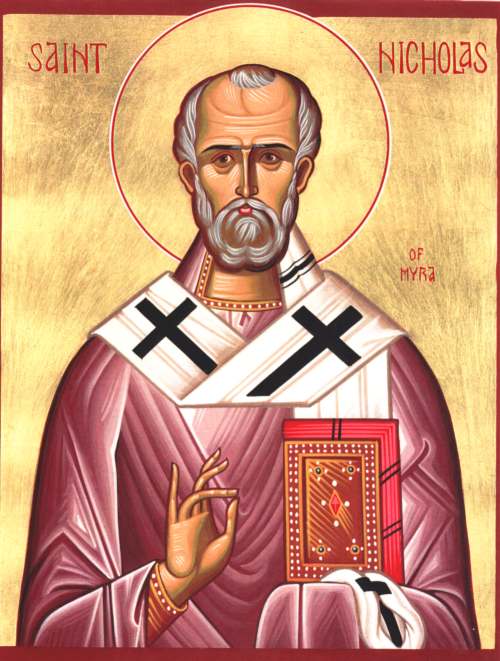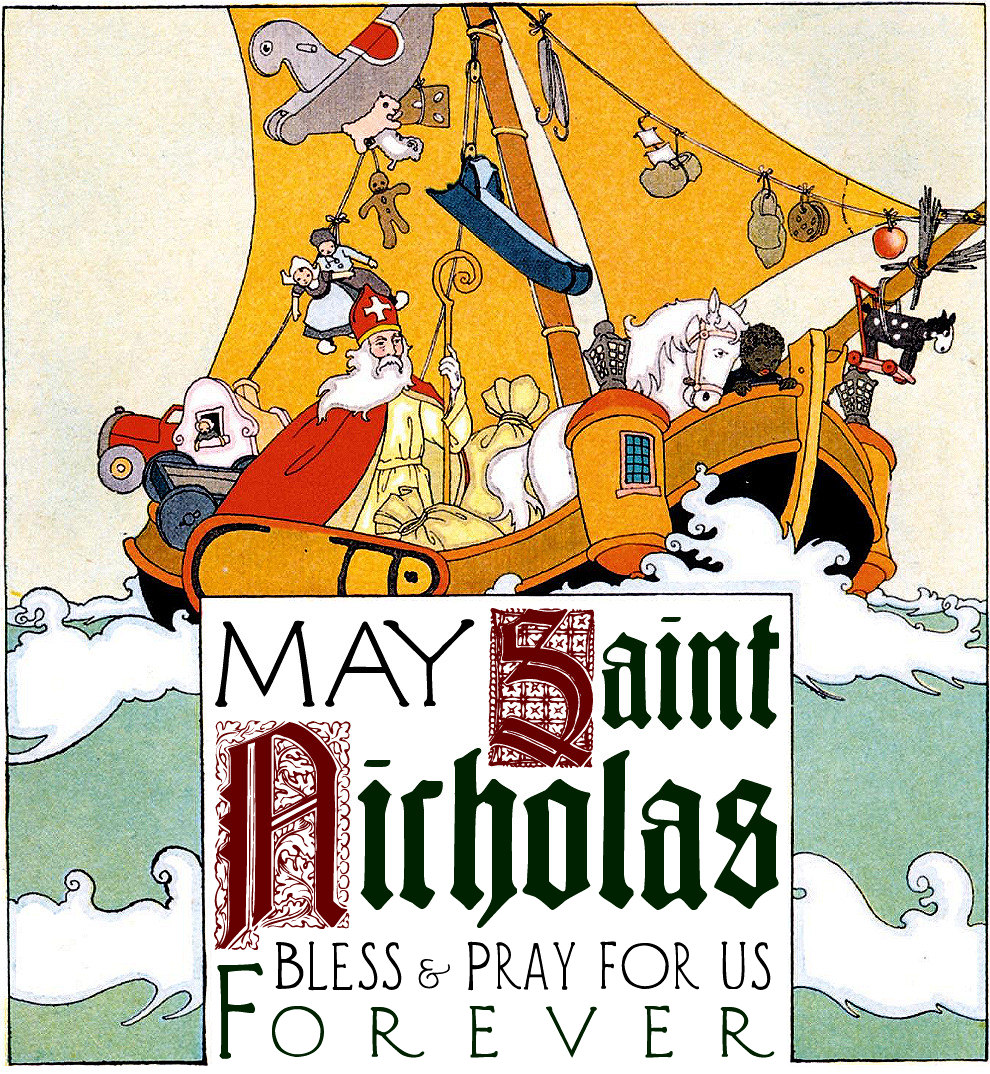
Yesterday was December 6th, as date so many of us are familiar with, or at least are whether we realize it or not. For me it marks the anniversary of my ordination (pause for applause...), but it is also St. Nicholas' Day. That's right, we celebrate and remember jolly old Saint Nick on December 6th. Ironically, most people end up celebrating Saint Nick on December 25th (to be read with biting cynicism). It's unfortunate that this remarkable man is so overlooked as he ought to be regarded, and unfortunate that our culture has gladly made Christmas more about him than about Jesus Christ - a fact of which I'm sure would cause the real St. Nicholas to roll in his grave. But what do we know about this man? How did he go from
St. Nicholas to
Santa Claus? Nicholas was born to wealthy Christian parents in Asia Minor in the

third century (c. 270 AD), and became the Bishop of Myra.
Myra was a harbor city on the Mediterannean coast. He is mostly regarded in the Greek Orthodox Church as the patron saint of sailors and fisherman, and is credited with being in attendence at the
Council of Nicea in 325 AD. One story surrounding his sainthood involves the miraculous increase of a shipment of wheat which he convinced imperial sailors to offload at Myra. He died on December 6th, 343 AD, and so his feast day is celebrated on the anniversary of his death. Many stories and legends surround this interesting man, perhaps the most important one for us in the US has to do with his gift-giving to children. While there are a variety of versions, there are two that particularly lend influence to the Western tradition of Father Christmas. One story

invovles an evil butcher who murders three children during a severe famine, but Nicholas sees through the butcher's treachery and miraculously resurrects the murdered children from the barrel containing their remains. The second story involves a poor man's three daughters, who cannot afford to marry and face a life of prostitution. Nicholas, wishing not to expose the family's predicament, goes to their home at night and leaves three bags of gold coins for the daughters to get married. In a variation on this story, he drops the coins down the chimney. If this is starting to sound familiar, it should. These saintly legends form the backdrop for our modern, American Santa Claus. It is interesting to note that in 1087, Myra was under seige from invading Muslim armies, and Italian sailors transferred (or stole, depending on whose side of the story you take!) Nicholas' remains to protect them and interred them in a church in
Bari in southern Italy. Nicholas' notoriety spread from there along with his patronage of giving gifts to children. The Dutch called him Sinterklaas, from which we derive the name Santa Claus (Santa=Saint; Claus is a truncation of Nicholas). I find the transformation over the years of Nicholas into Santa Claus to be both fascinating and saddening. I truly loathe the gluttonous debacle that Christmas has become in our country. Although, I suppose department stores wouldn't have sales at midnight on THANKSGIVING (!) if they thought no one would show up. But they do. In droves. Pathologically feeding our insatiable desire to buy, and justifying it by claiming 'good will' and 'the Christmas spirit'. The real Nicholas gave because of his love for the greatest gift of all, the Son of God given to humanity. Some say his inspiration for giving came from the wise men who brought gifts to the infant Jesus (
Matthew 2:1-12). So here's the rub: do we give at Chrsitmas because we simply love to buy things, or do we give because we love the Son of God who was given to us? St. Nicholas vs. Santa Claus...there kahn bee only wan (in best
Christopher Lambert voice).
 VS.
VS. 
 In the fantastic film Indian Jones and the Last Crusade, Indy has to find the Holy Grail. In order to do so he must pass three traps of extreme cunning and danger. The secret to passing the first trap is the sacred verse given him by his father, "Only the penitent man shall pass". Indy makes it through by realize that a penitent man is humble before God and kneel's (thus avoiding the spinning slicing blades of death).
In the fantastic film Indian Jones and the Last Crusade, Indy has to find the Holy Grail. In order to do so he must pass three traps of extreme cunning and danger. The secret to passing the first trap is the sacred verse given him by his father, "Only the penitent man shall pass". Indy makes it through by realize that a penitent man is humble before God and kneel's (thus avoiding the spinning slicing blades of death).  Instead, the heartbeat of Anglican prayer is summed up in the Prayer of Humble Access: "We do not presume to come to this Thy Table, O merciful Lord, trusting in our own righteousness, but in Thy manifold and great mercies. We are not worthy so much as to gather up the crumbs under Thy Table; but Thou art the same Lord whose property is always to have mercy..."
Instead, the heartbeat of Anglican prayer is summed up in the Prayer of Humble Access: "We do not presume to come to this Thy Table, O merciful Lord, trusting in our own righteousness, but in Thy manifold and great mercies. We are not worthy so much as to gather up the crumbs under Thy Table; but Thou art the same Lord whose property is always to have mercy..." The humble person is the one who recognizes their unworthy nature and their utter need of God's mercy and kindness. The humble person does not presume anything, but simply trusts in the promise of Jesus, that he came to seek and to save the lost. That he came not for the righteous nor the healthy, but for the sinner and the sick.
The humble person is the one who recognizes their unworthy nature and their utter need of God's mercy and kindness. The humble person does not presume anything, but simply trusts in the promise of Jesus, that he came to seek and to save the lost. That he came not for the righteous nor the healthy, but for the sinner and the sick. 


 What you and I need is a new heart. What Christians have, for millenia, called regeneration, and what Jesus called, being born anew (or born from above, or born again). From a new heart flows love, obedience, generosity, forgiveness, and peace. This transformed life is characterized by what St. Paul called the
What you and I need is a new heart. What Christians have, for millenia, called regeneration, and what Jesus called, being born anew (or born from above, or born again). From a new heart flows love, obedience, generosity, forgiveness, and peace. This transformed life is characterized by what St. Paul called the 




